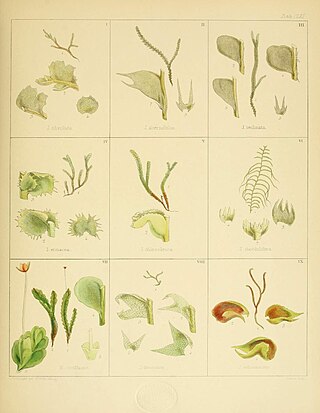 | |
| Author | Joseph Dalton Hooker |
|---|---|
| Illustrator | Walter Hood Fitch |
| Language | English |
| Series | Monthly parts |
| Subject | Botany |
| Publisher | Reeve Brothers |
Publication date | 1844–1845 |
| Publication place | England |
The Botany of Lord Auckland's Group and Campbell's Island is a description of the plants discovered in those islands during the Ross expedition written by Joseph Dalton Hooker and published by Reeve Brothers in London between 1844 and 1845. [1] Hooker sailed on HMS Erebus as assistant surgeon. [2] It was the first in a series of four Floras in the Flora Antarctica , the others being the Botany of Fuegia, the Falklands, Kerguelen's Land, Etc. (1845–1847), the Flora Novae-Zelandiae (1851–1853), and the Flora Tasmaniae (1853–1859). They were "splendidly" illustrated by Walter Hood Fitch. [3]
Contents
- Context
- Species
- Seedplants
- Ferns and clubmosses
- Mosses
- Liverworts
- Green algae
- Red algae
- Brown algae
- Diatoms
- Lichens
- Fungi
- References
- External links
The larger part of the plant specimens collected during the Ross expedition are now part of the Kew Herbarium. [4]






















